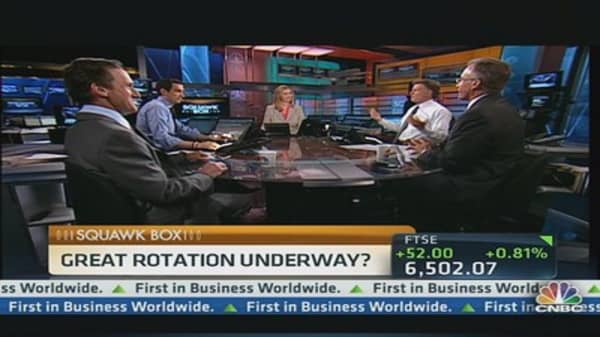The "Great Rotation" out of bonds and into equities has been a hot topic this year, but recent research has found although investor cash is fast leaving the bond market, it is not going in the direction of equities yet.
According to U.S.-based Trim Tabs Investment Research, which tracks stock market liquidity, money coming out of bonds is now going into savings deposits or money market funds.
"We think we are a long way away from the 'Great Rotation' that so many market strategists are anticipating. Far more of the money coming out of bonds seems to be making its way under the mattress than into equities," said Trim Tabs in a report.
(Read More:
The 'Great Rotation'—Is It Finally Happening?
)
According to Trim Tab's data, bond mutual funds and ETFs saw outflows of $67.9 billion in June, and $11.8 billion from July 1 to July 11.
Meanwhile savings deposits surged by a whopping $74.8 billion in the month of June, and retail money market funds - open-ended mutual funds that invests in short-term debt securities - took in $33 billion, over the same period.
A weekly liquidity report from funds data firm Lipper said U.S. investors pulled $1.1 billion from municipal bond mutual funds in the week ending July 10. At the same time money market funds saw a surge in net inflows of $22.9 billion.
(Read More: The Great Rotation May Be Just a Grand Illusion )





